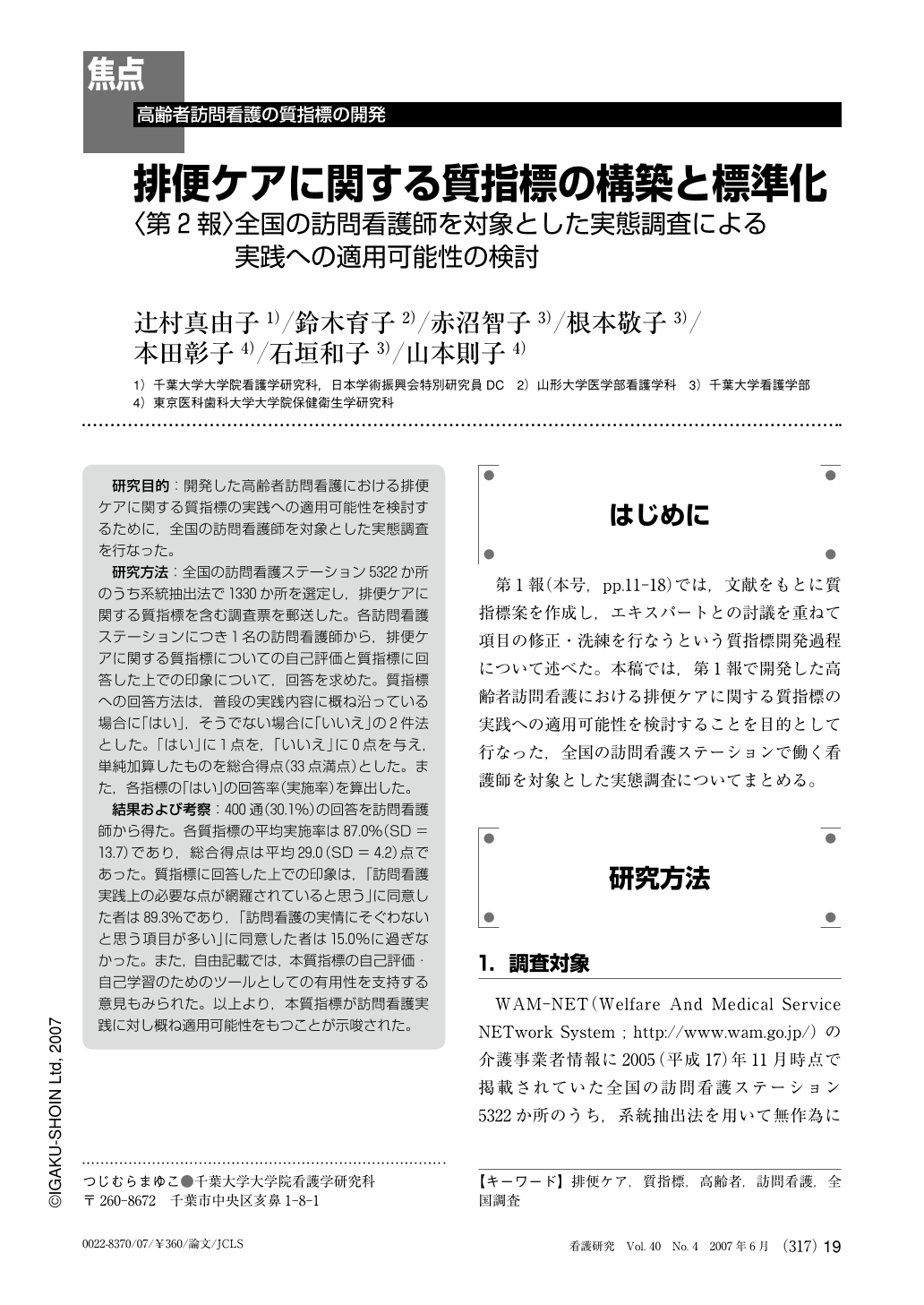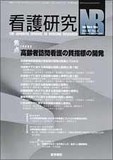Japanese
English
- 有料閲覧
- Abstract 文献概要
- 1ページ目 Look Inside
- 参考文献 Reference
- サイト内被引用 Cited by
研究目的:開発した高齢者訪問看護における排便ケアに関する質指標の実践への適用可能性を検討するために,全国の訪問看護師を対象とした実態調査を行なった。
研究方法:全国の訪問看護ステーション5322か所のうち系統抽出法で1330か所を選定し,排便ケアに関する質指標を含む調査票を郵送した。各訪問看護ステーションにつき1名の訪問看護師から,排便ケアに関する質指標についての自己評価と質指標に回答した上での印象について,回答を求めた。質指標への回答方法は,普段の実践内容に概ね沿っている場合に「はい」,そうでない場合に「いいえ」の2件法とした。「はい」に1点を,「いいえ」に0点を与え,単純加算したものを総合得点(33点満点)とした。また,各指標の「はい」の回答率(実施率)を算出した。
結果および考察:400通(30.1%)の回答を訪問看護師から得た。各質指標の平均実施率は87.0%(SD=13.7)であり,総合得点は平均29.0(SD=4.2)点であった。質指標に回答した上での印象は,「訪問看護実践上の必要な点が網羅されていると思う」に同意した者は89.3%であり,「訪問看護の実情にそぐわないと思う項目が多い」に同意した者は15.0%に過ぎなかった。また,自由記載では,本質指標の自己評価・自己学習のためのツールとしての有用性を支持する意見もみられた。以上より,本質指標が訪問看護実践に対し概ね適用可能性をもつことが示唆された。
The purpose of this study was to examine the applicability of the quality indicators (QIs) of home nursing for aged with bowel dysfunction based upon a national survey of nurses working at home nursing stations. Using systematic random sampling, we selected 1330 home nursing stations from 5322 home nursing stations nationwide and mailed questionnaires which included the QIs of bowel care. In each station, one home nurse was selected to self-rate their clinical performance according to the QIs ; their overall impression of the QIs was also surveyed. If their usual practice accorded to a QI, they answered “yes (=1),” while if it did not, they answered “no (=0).” The points were totaled with the perfect score being 33 points. The percentage of those who answered “yes” was calculated for each QI (executing rate). We received 400 questionnaires (30.1%) from home nurses nationwide. The average total score was 29.0 (SD=4.2) points and the average executing rate of all the QIs was 80.7% (SD=13.7). In their overall impression of the QIs, 89.3% of respondents answered that the QIs cover the important points in detail. Only 15% of the respondents answered that the QIs did not fit their practice. There were some comments that stated that the QIs could serve as a tool for self-evaluation and self-learning for home nurses. Taken together, these results suggested that the QIs were generally applicable to today?s home nursing in Japan.

Copyright © 2007, Igaku-Shoin Ltd. All rights reserved.


